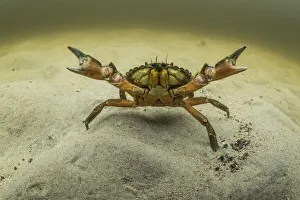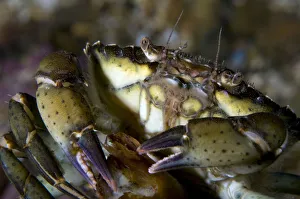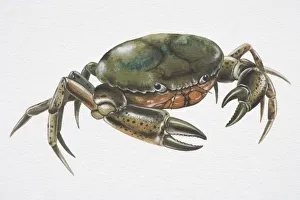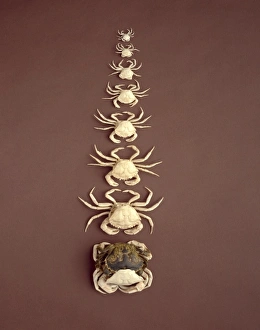Carcinus Maenas Collection
The Carcinus maenas, also known as the European green crab, is an invasive species that has made its way to North America
All Professionally Made to Order for Quick Shipping
The Carcinus maenas, also known as the European green crab, is an invasive species that has made its way to North America. This small but mighty creature has caused significant ecological disruptions in various coastal ecosystems. Kejimkujik National Park and Historic Site is one of the areas affected by this invasion. In November 2008, a close-up picture was taken of a Common shore crab (Carcinus maenas) in Lofoten, Norway. The image showcases the intricate details of its carapace, which boasts a deep green color. Another photograph captures this fascinating crustacean from another angle (Picture No. 12009564). With its menacing appearance and aggressive behavior, it's no wonder why this species is often referred to as the "shore crab. " In a front view shot (Picture No. 12009563), we see a Carcinus maenas poised in what seems like a mock attack. Despite being an invader in some regions, these crabs have their own unique beauty and charm. A stunning image labeled Common shore crab C017 / 8444 displays their distinctive features up close. They are be found not only on European shores but also in other parts of the world like North America. Its adaptability allows it to thrive even under different environmental conditions. A scanning electron microscope (SEM) captured yet another mesmerizing image of this common shore crab (Carcinus maenas). The SEM reveals intricate details that are invisible to the naked eye but contribute to our understanding of their biology and behavior. One remarkable aspect about these crabs is their reproductive capabilities. They carry eggs with them wherever they go – an incredible sight captured beautifully in one photo labeled "Common shore crab carrying eggs. " While the presence may pose challenges for native species and ecosystems alike, studying them provides valuable insights into invasive species management strategies worldwide.













